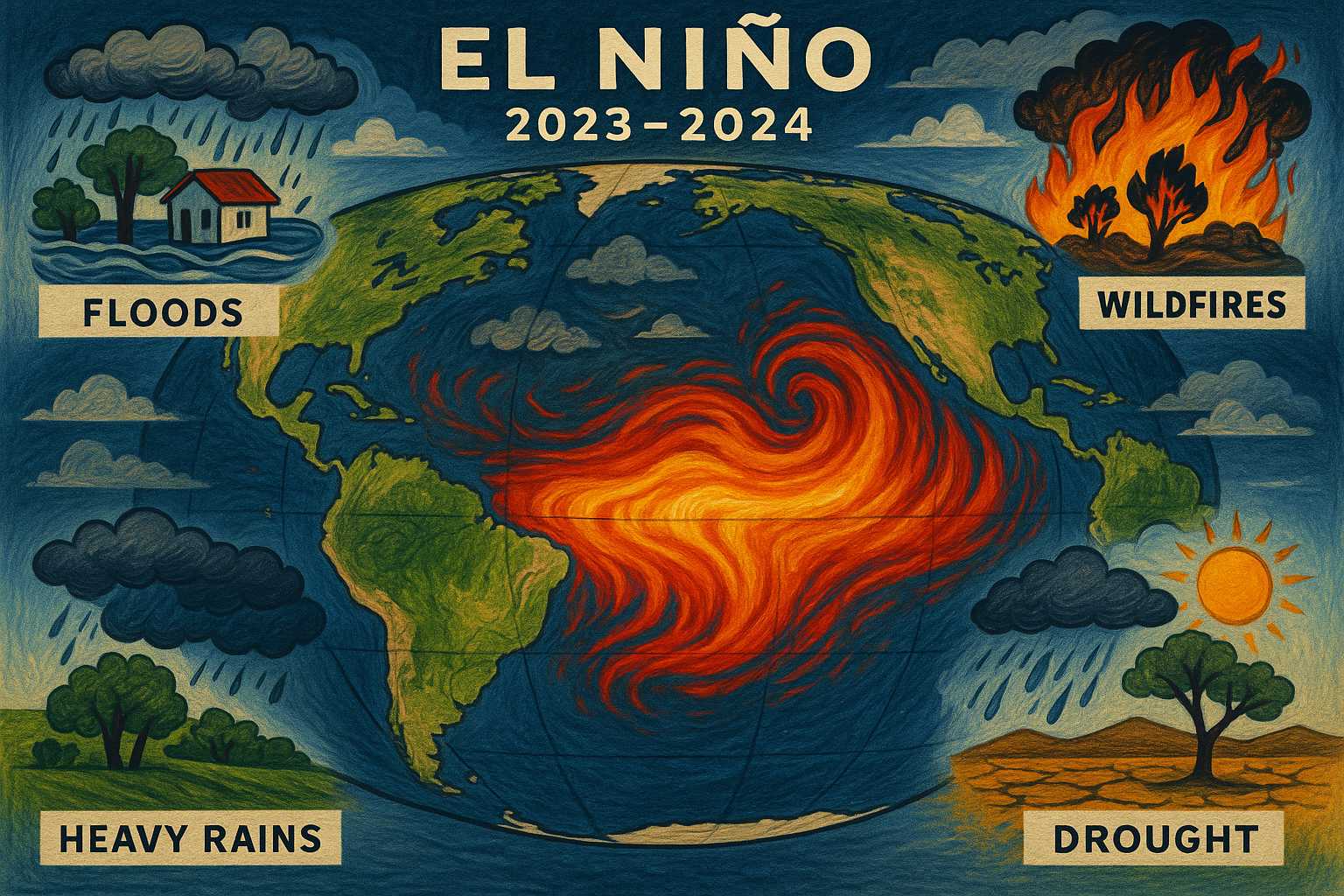By Dusty
El Niño is a periodic climate phenomenon characterized by the warming of sea surface temperatures in the central and eastern Pacific Ocean. Over the past year, the 2023–2024 El Niño event provided a textbook example of how a disturbance in ocean temperatures can ripple across the globe, reshaping weather patterns and impacting millions. Let’s dive into the science behind El Niño, its impacts during this recent period, and what communities can do to adapt to its powerful reach.
The Science Behind El Niño
El Niño is part of the larger El Niño–Southern Oscillation (ENSO) cycle. When trade winds weaken or even reverse across the Pacific, warm water spreads eastward, disrupting normal atmospheric circulation. This leads to a cascade of effects, including shifting jet streams, altered precipitation patterns, and temperature anomalies far from the Pacific Ocean itself.
Typically, El Niño events occur every 2–7 years, lasting anywhere from 9 to 18 months. They can intensify storms in some places while creating extraordinary droughts in others.
Global Impacts of the 2023–2024 El Niño
The latest El Niño began developing in mid-2023 and rapidly grew to a strong event by the end of the year. Here’s how it influenced weather around the globe:
-
United States: Southern states experienced unusually wet conditions, with heavy rain and flash flooding in places like southern California and Texas. Meanwhile, the Pacific Northwest was drier and warmer than average, impacting water resources and increasing wildfire risk.
-
South America: Peru and Ecuador suffered devastating floods in early 2024, forcing thousands from their homes and damaging infrastructure. Meanwhile, parts of Brazil endured worsening drought, straining agriculture and water supplies.
-
Asia and Australia: Indonesia and Australia saw below-average rainfall, exacerbating wildfires and threatening food production. In Southeast Asia, coral bleaching intensified as ocean temperatures rose.
-
Africa: East Africa, already vulnerable to food insecurity, received heavier-than-normal rains, triggering deadly landslides in Kenya and Somalia.
The Human Cost and Resilience
Weather disruptions like those seen in the 2023–2024 El Niño carry significant social and economic costs. Flooding destroys homes and takes lives; droughts diminish crop yields, pushing food prices higher and threatening livelihoods. Public health also suffers, with increased risks of waterborne diseases and malnutrition.
Yet, communities continue to adapt. Early warning systems, improved weather forecasting, and disaster preparedness campaigns—along with international cooperation on climate adaptation—help limit El Niño’s worst effects. The recent event also spurred conversations about urban planning, sustainable agriculture, and water storage solutions for the future.
Safety Tips for the Next El Niño
- Stay Informed: Monitor local forecasts during periods of expected El Niño impacts, especially if you live in vulnerable regions.
- Disaster Kits: Prepare emergency kits with food, water, medications, and important documents.
- Flood and Fire Preparedness: Make evacuation plans and review flood/fire safety procedures with your family.
Looking Ahead
El Niño may be a familiar part of Earth’s climate system, but its reach is as dramatic as ever. As we reflect on 2023–2024, the key takeaway is clear: scientific understanding and community resilience go hand in hand. Staying attentive to forecasts—and planning ahead—saves lives.
Stay safe out there,
Dusty
References: NOAA Climate Prediction Center, World Meteorological Organization, regional disaster response agencies


Leave a Reply